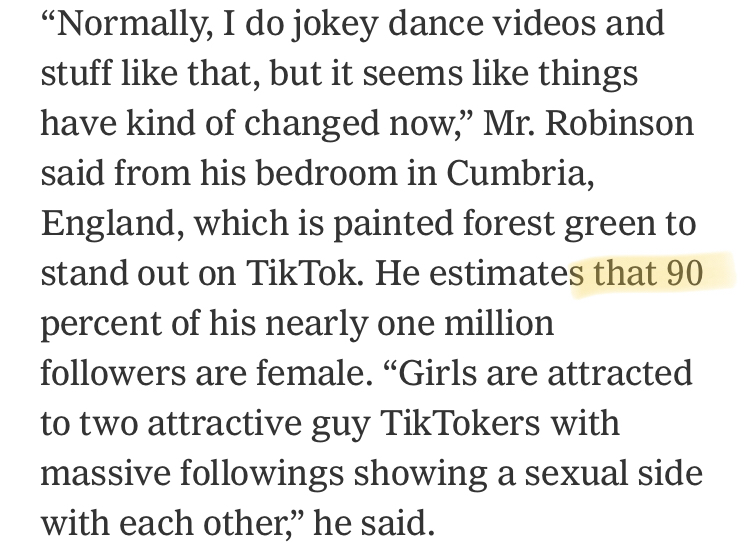The appropriate utilization of statistics, backed up by these methodical studies, is crucial for the entire modern society and the media sphere separately. Being a rather specific science, statistics can cause difficulties for people, which leads to incorrect interpretation of the analyzed data. This effect is particularly serious in the context of journalism, where the authenticity and relevance of data are critical. In his article with the provocative title, Alex Hawgood addresses the readers of The New York Times to tell about trends in the spread of homosexual patterns of behavior among bloggers (Hawgood). Thus, this article’s main idea is that becoming pseudo gay — when close bodily contact, kisses, and hugs are shown only on video — is hugely beneficial to increase own popularity.

Journalists find justification for this phenomenon when analyzing the composition of comments and the gender structure of the audience. In particular, Hawgood interviewed a blogger from TikTok, who became popular also because of provocative videos. For the first time, the author refers the reader to statistics, showing the degree of popularity of the video with the scene of homosexual behavior: 2.2 million views with 31 thousand comments. Although the influencer speaks about the prevalence of girls in his audience (90 percent), this in itself does not mean high interest in such topics.
The journalist’s problem is which way he interprets the data collected. The man did take several interviews and evaluated the main reasons for the new behavior of blogger guys, but to increase the clickability of the article, he decided to distort the results obtained: both the readers and the journalist know very well that not everyone is gay on this social platform. Moreover, even if such behavior can be found among hundreds of other videos, it does not necessarily have to be related to the gender distribution of subscribers of this creator. Thus, Alex Hawgood consciously deformed reality by changing the results into something more provocative and exciting.
Works Cited
Hawgood, Alex. “Everyone is Gay on TikTok.” The New York Times, 2020, Web.